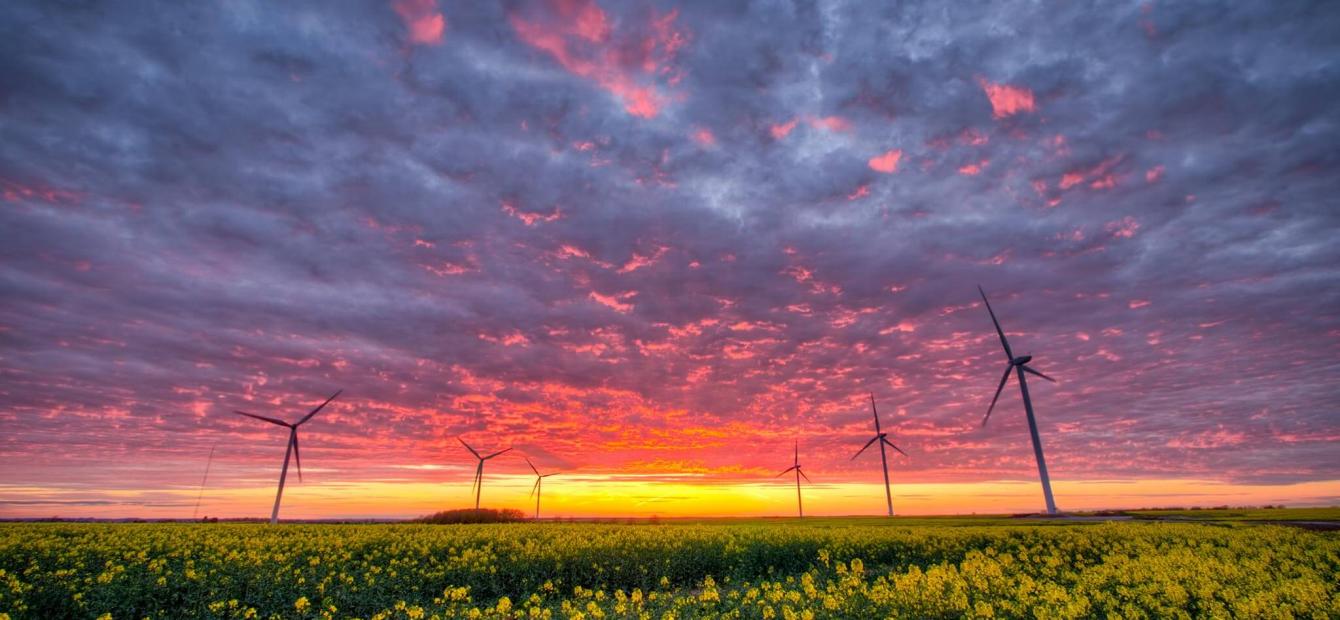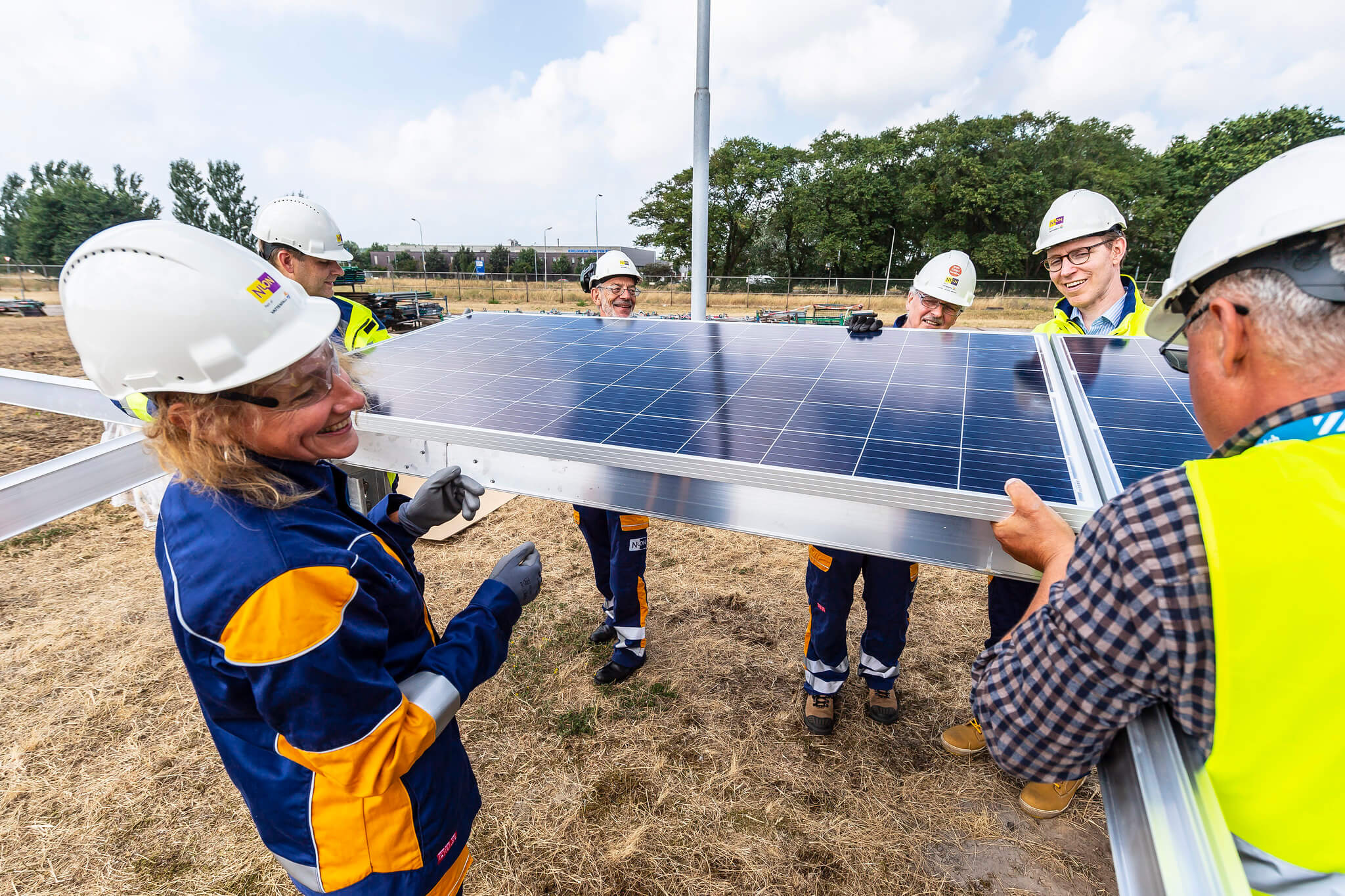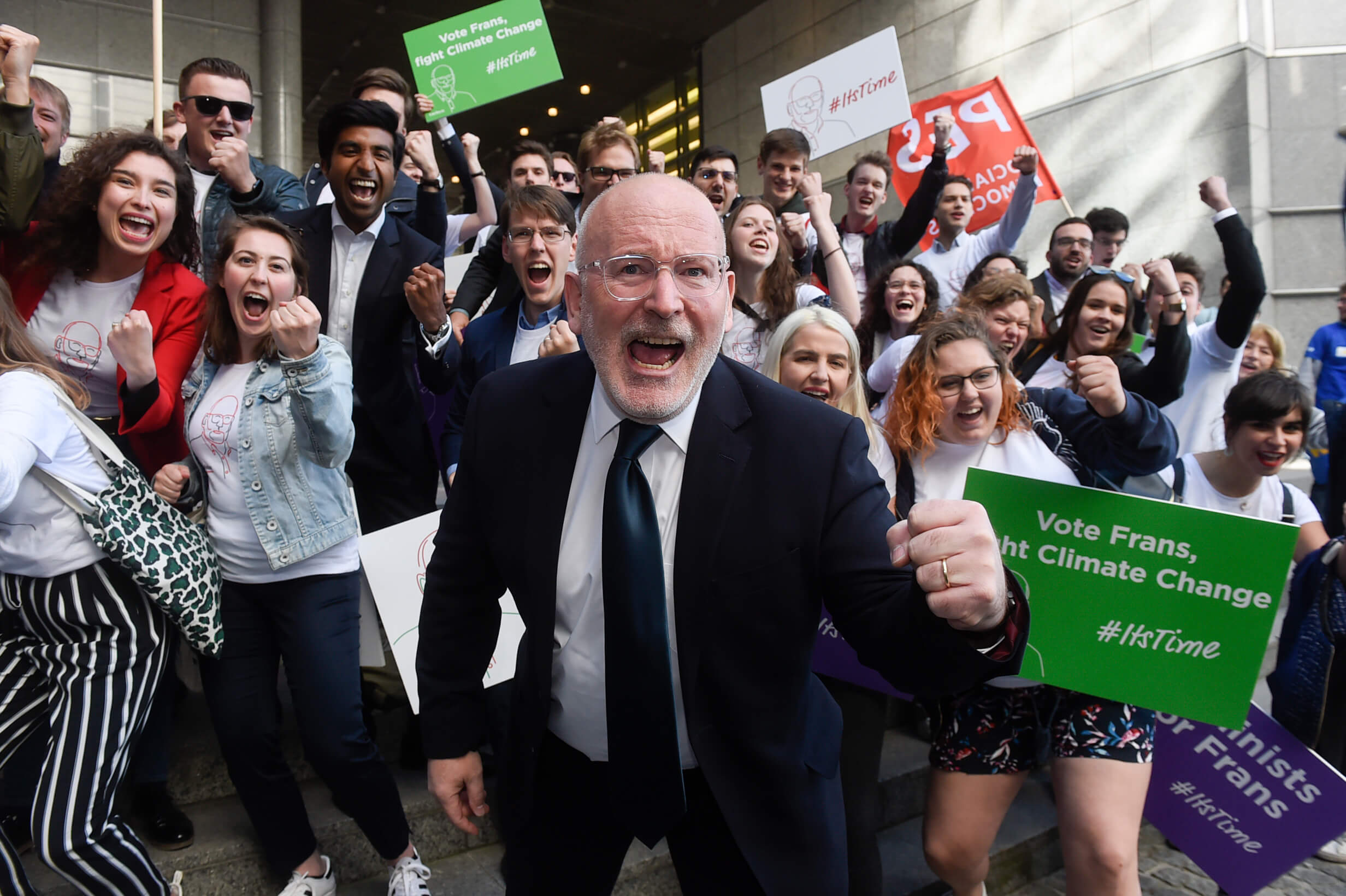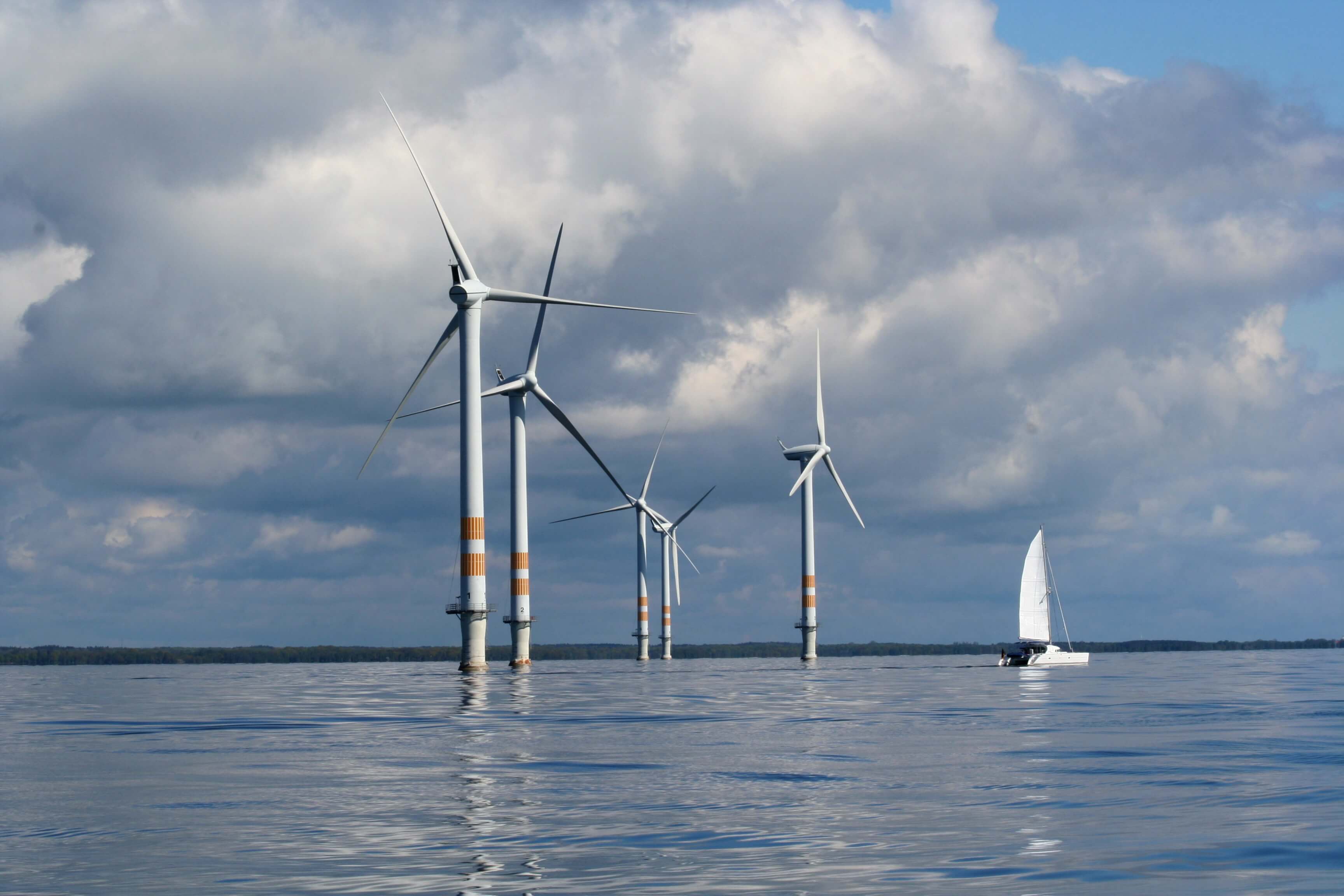
Are the Dutch really going green?
A recent political agreement on climate policy in The Netherlands is referred to as the ‘biggest refurbishment of the Netherlands since the Second World War’. A lesson learned from the Dutch case is that setting ambitions may be relatively easy, but translating them into effective climate action is a tougher job. Particularly when political decisions have to be taken on who will pay for what.
The third centre-right cabinet of Dutch Prime Minister Mark Rutte, which was sworn in on 26 October 2017, is profiling itself as the greenest Dutch government ever. Integrated climate and energy policy is one of the four key issues in the 2017-2021 Coalition Agreement (Regeerakkoord). Guided by the slogan ‘Confidence in the future’, the government strives to engage all stakeholders in tackling major societal challenges.
Dutch climate and energy policy is rooted in the national commitment to implement the UN Paris Climate Agreements of 2015. Additionally, as a member of the European Union, the Netherlands must adhere to EU agreements to reduce greenhouse gas emissions by at least 42 per cent by 2030, as compared to 1990 levels. When the new government took office in 2017, this EU target was a 40 per cent decline.
The new Dutch government indicated that it wanted to be a European frontrunner on climate policy
At that time, the Dutch government acknowledged that more would be needed for the Netherlands to contribute its fair share to the Paris Agreement and set the aim to achieve a reduction of 49 per cent by 2030. The new government also indicated that it wanted to be a European frontrunner, by seeking support among European partners to enhance the overall EU ambition to 55 per cent in 2030. If that European-wide ambition turns out to be unrealistic, the Netherlands would still try to find agreement on additional efforts with like-minded countries.
In October 2017, the Rutte government embarked on the course of translating its ambitions into tangible policies and measures, of fitting them in a comprehensive national Climate Agreement, and of framing the ambition for the longer term in a national Climate Law. This article elaborates on what happened between January 2019 and mid-September 2019, especially with regard to the Climate Law and the policy package assembled in the Climate Agreement. How do these proposals relate to the climate policy debates at the EU level? This analysis illustrates how difficult it can be – politically - to agree on ambitious climate and energy policies.
A national Climate Law
After adoption by the Second Chamber of Parliament on 21 December 2018, the Senate passed the Climate Bill on 28 May 2019 with a vast majority.1
Only the climate-sceptical, right-wing Party for Freedom (PVV), the Christian Reformed Political Party (SGP) and the Party for the Animals (PvdD) voted against. The final version of the Bill breathes compromise rather than ambition. Instead of binding targets it merely includes ‘policy intentions’ to achieve a 49 per cent emission reduction by 2030, and 100 per cent CO2-neutral electricity production by 2050.2
The Senate spent much time debating the question of to what extent the Bill assigns sufficient power to Parliament to interfere in – and steer – situations when agreed policy intentions may not be achieved. The answer remained somewhat vague: the Bill creates ‘hope’ but ‘no guarantee’ that the targets will be met.3
The Climate Bill provides a framework and long-term timeline for the national climate policy process. This includes a Climate Policy Plan every ten years (the first for 2021-2030), a revision of this plan every five years (starting in 2025), and a yearly Climate Policy Brief assessing current policy developments within the context of the ten-year plan.

This frame and timeline correspond with EU regulations, especially those regarding the governance (i.e. monitoring and reporting) of the Energy Union. Member states inform the European Commission by means of a ten-year National Energy and Climate Plan (NECP – the first, for 2021-2030, is due to be sent to Brussels at the end of 2019), and every two years with a report on the national policy proceedings.
According to this framework, the Rutte government has to send its first yearly plan to Parliament during autumn 2019. A few months later, it needs to send its ten-year plan to Parliament and the European Commission. It is expected that these plans will be based upon the national Climate Agreement, which is currently still subject to a final check with participants of the five so-called “climate tables” – the negotiation setting with stakeholders from civil society.
New, amended final(?) Climate Agreement
Just days before Parliament left for its 2019 summer recess, four Cabinet ministers presented the revised Climate Agreement.4
In the months and weeks before, rumours about laborious meetings of the various involved political parties, and even a looming government crisis on the issue, remained constant.
The comprehensive five-sector approach is a unique concept that is to date unprecedented in European climate policy development
However, the government presented an impressive package of 237 pages, containing comprehensive proposals for policy action in five key economic sectors: buildings, mobility, industry, electricity and agriculture.5 This comprehensive five-sector approach is a unique concept that is to date unprecedented in European climate policy development. In the Netherlands the package is considered to be ‘the biggest refurbishment of the Netherlands since the Second World War’, since it has huge implications for inter alia housing and office building (for example, heating and cooking), mobility and transportation modes, land use, and for industrial production. Hence, it will have implications for the daily life of all the country’s citizens.
Finally, and not a minor detail, the revised package was not yet supplemented with a proper assessment, because of insufficient capacity of the Netherlands Environmental Assessment Agency (PBL).6 As a result, a profound comparison with the earlier draft proposals is not yet available.
A Parliamentary debate on the new package, hastily scheduled on 3 July 2019, showed that a vast majority urged the government to deliver the missing assessment as soon as possible. Furthermore, the debate brought to light that only a small majority of the Second Chamber – the four coalition parties – supported the new package proposals. As highlighted above, the implementation of crucial elements of the package will need extra support from opposition parties in order to obtain a majority in the Senate.
Leader of the Green Party (GL) Jesse Klaver stated during the 3 July 2019 debate that the revised package is ‘a government proposal, not a broad-based agreement’.7 Minister of Economic Affairs and Climate Policy Eric Wiebes confirmed later that not all of the stakeholder organisations that participated in the negotiations had shown their full commitment to the amended agreement. ‘It is inevitable that full implementation of the package will include some command-and-control legislation,’ Wiebes added during the debate.
As already emphasised, such command-and-control legislation will require support of the Second Chamber and the Senate, notably of the Green Party and the Labour Party. The four coalition parties have to live with the fact that this support cannot be taken for granted.7
Splendid isolation or a European context?
It is not yet fully clear how the national climate proposals position the Netherlands within the European climate policy context. At its start in 2017, the Rutte III government set the ambition for the Netherlands to become a leader on climate change within the EU. The Netherlands would demonstrate that it is possible within one generation (which is 30 years) to transform the economy to climate neutrality and maintain the country’s international competitiveness.
While doing so, the Netherlands would lobby other European member states to join its ambitions,8 by advocating for setting EU-wide emission reduction targets of minus 49 per cent or even minus 55 per cent by 2030, and minus 95 per cent (that is, climate neutrality) by 2050. The government considers the revised Climate Agreement as a major step towards delivering on this promise.
The European diplomatic lobbying power of the Netherlands can be questioned
A “reality check” on this European ambition drew some media attention, but so far it has not filtered through to the political debate. The European diplomatic lobbying power of the Netherlands can be questioned, however, and mainly on two points. First, monitoring data of the Netherlands’ factual climate policy performance, recently published by the European Commission, show that the country does not perform very well, especially on energy efficiency and the use of renewable energy.9
Second, in legal terms the proposals still have to be transferred into laws and regulations, while they are based only on ‘indicative targets’, in line with the 2019 national Climate Law. With regard to this issue, the government made a remarkable statement in June 2019, saying that ‘the emission reduction target of 49 per cent for 2030 is not yet final and may be influenced by the outcome of international debate’.10 This would imply that the targets can still be adjusted, upwards or downwards.

In this respect it is interesting to follow to what extent the new European Commission will be able to stick to its bold climate and energy ambitions for 2019-2024, announced by its new President Ursula von der Leyen. The new Commission Executive Vice-President Frans Timmermans definitely has a challenging portfolio here, particularly in forging a real European Green Deal. In the same context, Minister Wiebes recently stated that ‘he is hoping that EU climate policy – particularly on the EU's emissions trading system – will develop so fast that a national CO2 levy will be unnecessary’.11
Again, this triggers the question of to what extent the Netherlands’ ambitions to lead the European policy developments are realistic.
What comes next?
Now that the revised Climate Agreement has been agreed upon by the four political parties supporting the Rutte III coalition, the road ahead lies open. However, some obstacles are looming.
A first hurdle to be taken is a renewed assessment of the revised package by the Netherlands Environmental Assessment Agency (PBL) and the Bureau for Economic Policy Analysis (CPB), with a focus again on achievability and affordability. On 3 July 2019, Parliament asked the government to table the missing assessment as soon as possible.
On 10 September 2019, Minister Wiebes informed the Parliament that the PBL will not be able to assess the full package.12 However, ‘a qualitative analysis and – where possible – a quantitative interpretation of major package revisions’ will become available before the end of 2019. Whether Parliament will accept this, will become clear when Minister Wiebes’ letter will be discussed later this autumn.
The implementation of the package will be a step-by-step process
The implementation of the package itself is a second hurdle. This will be a step-by-step process. Parts of it require (only) a majority in the Second Chamber, while other parts require amending existing or establishing new regulations, which will need additional majority support in the Senate. As highlighted above, such Senate support requires additional opposition votes.
On 10 September 2019, the government has sent a legislative agenda for the Climate Agreement to Parliament. This agenda includes crucial building blocks of the agreement, such as funding proposals in the 2020 Government Budget, a proposal for amending energy taxes on households and proposals for a CO2 levy for industry. All of these issues will require approval from the Second Chamber and the Senate.
An additional implementation difficulty is the question of whether central, regional and local governments have sufficient capacity, expertise and financial means for the immense implementation challenge of the package. As well as the question to what extent the ruling of the Supreme Court in the Urgenda Case – expected before the end of 2019 – will influence the implementation debate.
A third hurdle is that interaction may occur between Dutch decision-making and the progress the EU will make on the Union’s climate ambitions for 2030 and 2050. The Dutch climate lobby in the EU for very ambitious emission reductions by 2030 and 2050 may no longer be as effective, now that Prime Minister Rutte remains in office in The Hague instead of moving to the new European political constellation in Brussels.

The question remains what will happen to support for the bold national ambitions of, in particular, the Dutch industry when the EU compromises on less-ambitious targets for 2030 and 2050 than the current targets included in the Dutch climate agreement. Industry’s argument for the need to maintain a proper European economic level-playing-field could then start again to play a role, which may influence the lasting support of the centre-right parties in the Rutte III coalition for the Climate Agreement.
In this context, the above-mentioned, as well as the just as bold climate promises of new President of the European Commission Von der Leyen to the European Parliament, may have induced some feelings of comfort on the part of Dutch policy-makers. However, as on the national level, the proof is in the pudding in Brussels too.
The support of the European Council is so far uncertain and in the European Parliament the Greens-European Free Alliance may have won 23 seats (increasing from 51 to 74) in the 2019 elections, but 11 of these 74 seats come from the United Kingdom. A crucial question is whether the green power of the European Parliament has increased enough to make von der Leyen’s ambitions come true.13
Complicated politics ahead
As highlighted above, the national Climate Agreement includes very high ambitions and an impressive package of comprehensive policy proposals. Generally speaking, it is already politically complicated to implement such a policy package. However, the sequence of events around the March 2019 elections have made implementation even more complicated, both on the national and European levels.
The most important complication on the national level is the issue of allocating implementation costs to economic sectors and consumers. Here, political consensus is still far away. Solutions at this point are not included in the Agreement, and the election debates in March have made the issue very precarious. The battle has already started, for instance on a minor point of whether green households that shift from gas to electricity must pay to shut down their gas connection.
On the European level, a key complication is the issue of Dutch credibility within the EU as an advocate of high climate ambitions for the EU. As long as the implementation process of the Dutch Climate Agreement cannot show concrete results in terms of emission reductions, higher energy efficiency and/or a higher use of renewable energy, the Netherlands’ ambitions as a leader for Europe will inevitably have to be somewhat moderate.
For 2020 and beyond, key challenges for the Rutte III government are, first and foremost, to deliver the concrete results that were promised to voters on the national level, and to show to other EU member states that it really is possible to reach broad societal consensus on the urgent need to achieve decarbonisation of the Dutch economy without ruining its competitiveness. Effective diplomatic and international lobbying power starts and finishes with charisma, enthusiasm and success at home. If Rutte’s government manages this correctly, they might receive a place in history books. Europe is watching!
The national Climate Agreement of June 28, 2019
Overview of intended key policy and measures by economic sector
Buildings
- Enhancing the energy efficiency of 1,5 million homes and 1 million utility buildings
- New buildings will no longer be heated with natural gas
- Municipalities take the lead in a local, participatory approach
- Stronger tax incentives for energy efficiency and CO2-reduction
Mobility
- All new passenger cars to be emission-free by 2030
- Tax incentives for electric vehicles, including for second hand cars
- 1.8 million charging points by 2030
- Modal shift from car to bicycle/public transport
- Smart logistics solutions to enable more efficient and sustainable transport
Industry
- Introduction of a carbon levy, starting at €30 per ton in 2021 and rising to €125-150 per ton in 2030
- Subsidy scheme for renewable energy and CO2-reduction options in industry, such as Carbon Capture and Storage
- Funding for innovations to enhance the use of hydrogen and other sustainable fuels
Electricity
- Phasing out coal-fired electricity generation by 2025/2030; first plant to be closed by 2020
- Accelerating investments in offshore wind power, and in onshore wind and solar energy
- Subsidies for additional renewable energy capacity (wind and solar) until 2025; target: 70% renewable share in electricity production by 2030
- Introduction of a minimum CO2 price for electricity production
Agriculture & land use
- Enhancing sustainable heating in greenhouse horticulture
- Reducing methane emissions from livestock through improved processing of manure
- Carbon storage in soil and vegetation through pilot programmes for climate-friendly land use
- Incentives for climate-friendly food consumption and reducing food waste
Based on: Climate deal makes halving carbon emissions feasible and affordable.
- 1See Clingendael Policy Brief January 2019.
- 2Later, an even less ambitious wording than ‘policy intention’ was used.
- 3Mr Jesse Klaver (one of the initiators of the Bill, and leader of the Green Party) in the Senate debate.
- 4See: https://www.klimaatakkoord.nl/documenten/publicaties/2019/06/28/national-climate-agreement-the-netherlands
- 5See https://www.klimaatakkoord.nl/documenten/publicaties/2019/06/28/national-climate-agreement-the-netherlands
- 6Stated by Minister Eric Wiebes in parliamentary debate on 3 July, 2019.
- 7 a b Plenary debate on climate policy packages on 3 July, 2019.
- 8Most recent lobbying activity was a bilateral Netherlands – Germany on August 22, when Prime-Minister Rutte and Federal Chancellor Merkel discussed climate issues behind closed doors.
- 9See: European Commission’s assessment of draft-NECP 2021-2030, June 18, 2019.
- 10See: Cabinet letter to Parliament, accompanying the Climate Agreement, June 28th, 2019.
- 11Parliamentary debate on climate and energy policy in Second Chamber on September 4th, 2019.
- 12See Minister Wiebes’ Letter to Parliament, 10 september 2019.
- 13See: ‘Von der Leyen’s climate promises run into Brussels reality’, in Politico, September 5, 2019.



0 Reacties
Reactie toevoegen